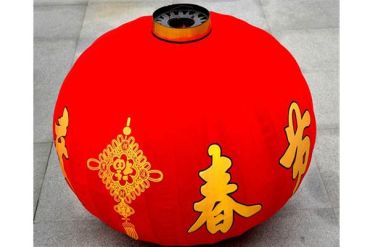This learning sequence explores celebrations, holidays and festivals that are known and/or celebrated in the classroom, focussing specifically on the Chinese Lantern Festival. It is also aligned to the Australian Children’s Television Foundation ‘Hoopla Doopla’ episode ‘Trading Places’ and explores different ways of moving, focussing on circus dance and gymnastics, culminating with a final movement performance piece.

Episode Synopsis: Episode 24 - Trading Places
It is the Lantern Festival & Bop needs help to make the lanterns. If Zap helps Bop make lanterns then who will do his deliveries? If Mimi does deliveries who will make the dumplings? Soon everyone in town has traded places.
Hoopla Doopla Background
In the town of Hoopla live six extraordinary characters each with their own amazing physical skill: Mimi runs the café and looks after everyone in town while juggling muffins and milkshakes; Ziggy, the shop keeper, does magic tricks which go in surprising directions; Zap, the town messenger, delivers packages in the most acrobatic manner possible; Bop, Mr Fix-It is able to lift almost anything; flexible Squidgie looks after the town garden and can often be found inside a pot-plant, finally Jango, the street sweeper, is always playing tricks and causing mischief.
Hoopla Doopla! is a unique and ground breaking show for 3-7 year olds, using physical action and comedy to drive the story. They tumble, juggle, leap and somersault in and out of trouble. However, whenever anything goes wrong - and it usually does - they always have each other to fall back on.
Hoopla Doopla! is a co-production between the Australian Broadcasting Corporation and China Central Television. There are 52 x 12-minute episodes with both English and Chinese language versions. It was filmed in in Beijing with a mix of Chinese and Australian crew and performers.
Hoopla Doopla! - Series 1, Episode 24 - Trading Places [MANDARIN]
The Hoopla Doopla: English & Chinese Language Resource contains the English and Mandarin language versions of 13 selected episodes from the Hoopla Doopla! TV series. They are available for purchase and download from the Australian Children’s Television Foundation at: Hoopla Doopla: English & Mandarin Language Episodes for Download
Related resources
Australian Curriculum alignment
Learning area: Geography, Health and Physical Education, Language: Chinese
Year level: Foundation, Year 1, Year 2
Country: China
General capability: Intercultural understanding
Content description:
Geography: The location of the major geographical divisions of the world in relation to Australia (ACHGK009)
Health and Physical Education: Identify actions that promote health, safety and wellbeing (ACPPS006)
Describe their own strengths and achievements and those of others, and identify how these contribute to personal identities (ACPPS015)
Describe ways to include others to make them feel they belong (ACPPS019)
Perform fundamental movement skills in a variety of movement sequences and situations (ACPMP025)
Incorporate elements of effort, space, time, objects and people in performing simple movement sequences (ACPMP029)
Use strategies to work in group situations when participating in physical activities (ACPMP030)
Discuss the body’s reactions to participating in physical activities (ACPMP028)
Chinese: Notice aspects of Chinese language and culture that are ‘new’ or ‘interesting’, and observe how relationships influence language use and own identity (ACLCHC009)
Respond to and create simple Chinese stories, songs and rhymes, reproducing rhythm and sound patterns to express feelings (ACLCHC005)
Create short imaginative written texts using images and copied characters (ACLCHC006)
Identify common Chinese characters and words in Pinyin using contextual cues (ACLCHC008)
Participate in class routines, structured conversations and activities using teacher-modelled tones and rhythms (ACLCHC001)
Reproduce the four tones and recognise how they can change the meaning of words (ACLCHU010)